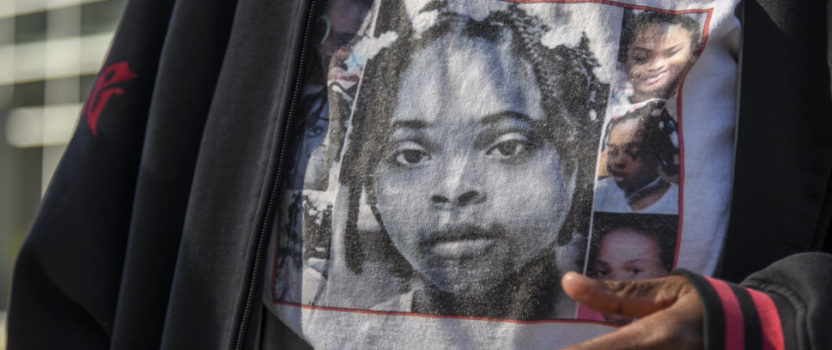Want to help DC’s missing Black and Latinx teens? Runaway, homeless youth need housing.
“I left because my foster mother was mistreating me,” one of DC’s missing Black and Latinx teen girls told WUSA9. She opted to sleep in the laundry room of an apartment building next to her sister’s place rather than return to foster care.
Vaneshia Weaver, another teen reported missing, told WUSA9 that she wasn’t missing at all; she was in between group homes. She had been living in unsanitary conditions in one home and she stayed with her father while she waited for another space to open up.
The Mayor’s Office reported that the majority of the missing DC teen girls left home voluntarily, and doubts and suspicions are rampant about them being kidnapped and sex trafficked. There’s a false perception that missing teenagers are one of two characters: the rebellious rulebreaker, fleeing a good home on their own accord; or the abducted child, snatched off-guard and forced into sex work like in the movie Taken. The data paints a more complicated picture.
What does the data say?
According to police data, there hasn’t been a spike in incidents of missing, runaway youth in DC. In fact, the reported numbers are consistent with previous years, and the actual numbers are higher: Not all teens are reported missing. It is valid and necessary to question the police’s account, particularly in the context of law enforcement violence against communities of color. In this case, research backs up their claim.
National data shows that at least 500,000 youth — and as many as 2.8 million — between the ages of 12 to 17 are experiencing homelessness in the U.S.
More than 50 percent were asked to leave by a caregiver, and thousands more ran away because they were experiencing neglect, physical or sexual abuse at home, family rejection because of their queer or trans identity, or in many cases, a combination of these factors.
Many of these kids don’t want to be brought back home; they want to be safe, and for most runaway and homeless teens, home isn’t safe. Still, there are limited job and housing options for unaccompanied youth.
What about sex trafficking?
This is where the sex trafficking narrative comes in. A study by the National Network for Youth showed that more than 60 percent of homeless youth have experienced physical or sexual assault on the street. Sexual harassment and assault in public spaces, as we know well at Collective Action for Safe Spaces (CASS), is incredibly common. But teens have few alternatives to sleeping in public spaces. There are only 4,000 shelter beds across the U.S. for at least half a million unaccompanied homeless youth.
Sex trafficking is a problem, but it doesn’t happen the way you saw in Taken. The people most likely to be targeted are vulnerable homeless youth who have nowhere else to turn. Most commonly, though, runaway and homeless youth are engaging in survival sex: trading sex for a place to sleep or other basic necessities like food.
The solution to youth homelessness is not to bring teens back home to unsafe environments, or to criminalize the actions they take to survive. The solution is housing.
There are at least 500,000 homeless youth in the U.S. and only 4,000 shelter beds for 12 to 17 year olds. Here’s how you can help:
- Donate to local shelters housing runaway and homeless youth. Here in DC, there are a lot of great local organizations serving teens in crisis like the Latin American Youth Center, Sasha Bruce YouthWork, and Walda Alston House.
- Become a foster parent or host family. Fill out this application with the Latin American Youth Center, and provide temporary or long-term housing to youth — and remember that caregiving for youth who have experienced trauma will take some patience. Build a support network, and make sure you get lots of help!
- Support this national campaign to increase funding for youth housing. The National Coalition for the Homeless teamed up with the Ali Forney Center to call for more funding for shelters and services to care for this specific population.
- Join CASS at the Day of Action for Housing Rally on April 1st organized by the National Coalition for the Homeless. Bring signage to show support for DC’s Black and Latinx runaway youth, and call attention to the problems they’re facing in our demands for more federal funding for housing.

